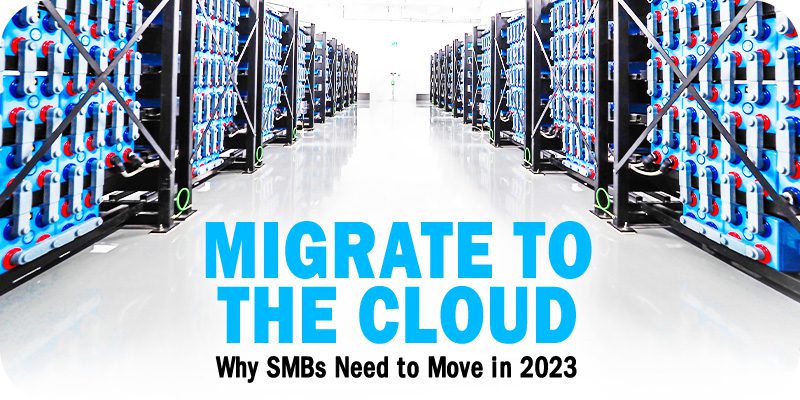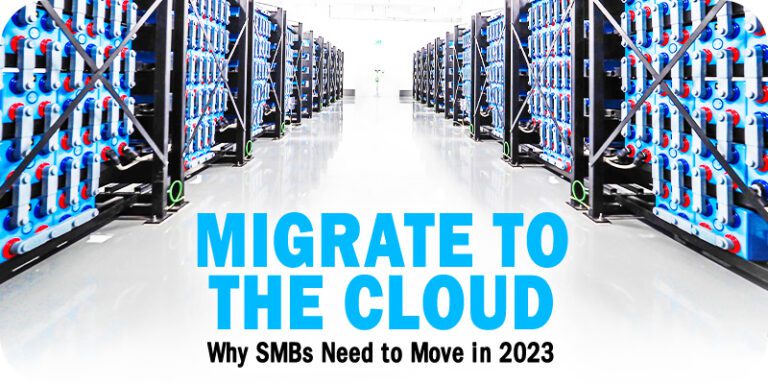Why SMBs Need to Migrate to the Cloud in 2023

As part of Solutions Review’s Contributed Content Series—a collection of articles written by industry thought leaders in maturing software categories—Rob Spitzer, Director of Cloud Services at InterVision, explains why small-to-medium-sized businesses (SMBs) must migrate to the cloud.
Though once considered unsafe and unreliable, cloud technology has emerged as a mature and essential tool for enterprises across sectors. Migrating to the cloud benefits organizations of all sizes, not just large enterprises. Small and medium-sized businesses (SMBs), in particular, should strongly consider migrating from on-premise software to the cloud to offload the burden of IT infrastructure management from their (most likely) small IT teams to a cloud service provider (CSP).
According to a recent Google Cloud survey, over 41 percent of IT leaders plan to increase their investments in cloud-based products and services this year, even in the face of economic uncertainty like inflation and supply chain disruptions. But if you’re still unsure about the merits of migrating from legacy systems to the cloud, consider the value of the following five functions.
1) Cost savings
Migrating to the cloud reduces infrastructure costs and lowers operational expenses. Gone are the days of onsite hardware upkeep and updates. Moving to the cloud means upgrades and maintenance become the responsibility of the CSP. This cost reduction frees up money for other expenses around the enterprise—from sales initiatives to research and development—and a more available budget means more innovation.
Furthermore, many cloud migration services offer flexible payment terms. Depending on your provider, you may choose to participate in a pay-as-you-go model that only charges for the services you use. According to Gartner, even with comparably affordable and adjustable payment options, public cloud spending is expected to increase 21 percent in 2023. By the end of the year, the market is projected to reach $592 billion worldwide. Those who don’t make the switch now may fall behind when macroeconomic conditions level out, especially if the economy has an aggravated impact on their bottom line, as is the case for SMBs.
2) Increased flexibility
Successfully navigating the always-evolving business landscape requires organizational agility and flexibility. Unlike onsite legacy software, cloud computing facilitates quick adaptations to market changes and other external factors, allowing a business to stay agile and up-to-date.
Beyond responding to external factors, the cloud also adapts in real-time to internal influences. If user demand increases or decreases, the cloud can scale up or down in response without overburdening your IT team or overloading your systems. In fact, 62 percent of surveyed IT executives planning to migrate more workloads to the cloud are championing the move for more flexibility and scalability. Since SMBs often work with fewer resources than large enterprises, having a flexible external partner is a huge advantage.
3) Improved security
A common misconception about the cloud is that it is less secure than onsite solutions, but if you’re working with a reputable cloud service provider or managed services provider (MSP), this is not the case. MSPs invest significantly in security measures like advanced encryption, access controls, and regular backups to protect user data. According to Oracle, 60 percent of C-suite executives said that security was the number one benefit of using the cloud.
Even with robust security endeavors, however, ransomware attacks remain a problem. Proactive protection is the key to mitigating the negative impacts of an attack, but the cyber defenses available through the cloud also provide disaster recovery options that can minimize the risk of critical data loss or downtime. A cloud-based organization’s disaster recovery resolution time is just over two hours compared to eight hours for a business that doesn’t use the cloud. Ransomware breaches are costly and result in a loss of consumers’ trust, so the aftermath of an attack could be devastating to SMBs. Investing in a cloud solution with robust protections and disaster recovery options could ultimately save time, money, and their reputations.
4) Improved collaboration
As long as you have a device connected to the internet, data in the cloud can be accessed from anywhere by the appropriate parties. Since the pandemic accelerated the shift to hybrid and remote work, remote data access is a must-have for organizations. The cloud allows team leaders to control security permissions, and these controls help streamline workflows to ensure sensitive data can only be seen and edited by authenticated users.
The cloud also allows multiple people to simultaneously work on projects even if they’re not in the same physical space, improving team communication and productivity. This real-time collaboration means everyone can see when changes are made and who made them. The cloud also provides document version histories so teams can reference previous iterations of documents if needed. Many SMBs are remote-first teams, so data connectivity is critical.
5) Access to Innovation
The cloud promotes innovation by enabling organizational access to state-of-the-art technologies like AI, machine learning, and big data analytics, giving cloud-based businesses a competitive advantage. The cloud empowers enterprises to enhance their efficiency and versatility, which impacts their new product development strategy and ability to address customer demands promptly. It enables businesses to launch products quicker, giving smaller companies the chance to compete with bigger ones.
The benefits of cloud migration help set your business up for success and growth, no matter the size of your organization. The smartest SMBs and large enterprises will take advantage of the flexibility, cost savings, security, and opportunities for collaboration and innovation the cloud provides. As a result, they’ll have a leg up on the competition and optimize their IT systems in 2023—and beyond.
- Why SMBs Need to Migrate to the Cloud in 2023 - August 24, 2023

 By
By

















